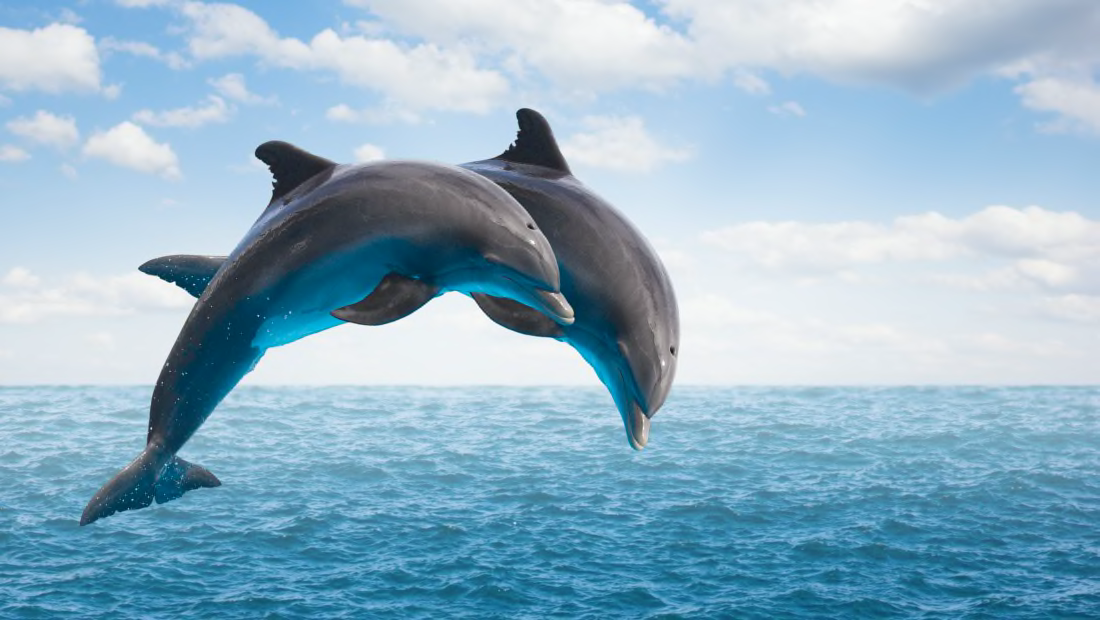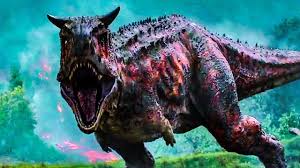Yuri&Joselyn
Coral Reefs

 )
)
Clear Water:
Corals need clear water that lets sunlight through,they don’t thrive well when the water is opaque. Sediment and plankton can cloud water, which decreases the
amount of sunlight.
Warm water temperature:
Reef-building corals require warm water conditions to survive. Different corals living in different regions can withstand various temperature fluctuations. However, corals generally live in water temperatures of 68–90° F.
Clean Water:
Corals are sensitive to pollution and sediments. Sediment can create cloudy water and be deposited on corals, blocking out the sun and harming the polyps. Wastewater discharged into the ocean near the reef can contain too many nutrients that cause seaweeds to overgrow the reef.
Saltwater:
Corals need saltwater to survive and require a certain balance in the ratio of salt to water. This is why corals don’t live in areas where rivers drain fresh water into the ocean.
https://www.youtube.com/watch?v=6jCJiO75pxo So how they meet is the male dolphin whistle to get a female to meet the when she likes him then the have sex . after the female pregnant. Well first they meet dance and then they mate.
https://www.youtube.com/channel/UCQuu...
BELUGAS
the way how belugas meet is going around eachother and smelling and then they sart having it it might seem wierd but they have to meet like 2 das before it happens.
Animal Adaptation
Squid:
 Squid have some unique adaptations. Some can change color, some use bioluminescence to create light, and some shoot ink to cloud the water and lose predators.
Squid have some unique adaptations. Some can change color, some use bioluminescence to create light, and some shoot ink to cloud the water and lose predators.
Octopus:

Octopuses can use camouflage, which is when an animal blends into its surroundings. They can change their own color and texture to hide. If they're attacked, they can use poisonous chemicals to hide from predators and kill their prey.
Lobster:

Lobster adaptations include the
ability to shed their exoskeleton, compound eyes, dark coloring, claws designed for different tasks and a heightened sense of smell and taste.
Plant Adaptation
Red Algae:
Red algae are non-vascular plants meaning they lack a vascular system.The absorb water directly through their cell walls and then the water moves from cell to cell via osmosis.
Seagrass:
 Seagrasses have evolved to withstand various degrees of salinity. Tolerate temperatures ranging from minus 6 to 40 degrees C. Their horizontal stems, called rhizomes, enable them to cope with the tugging of currents and waves.
Seagrasses have evolved to withstand various degrees of salinity. Tolerate temperatures ranging from minus 6 to 40 degrees C. Their horizontal stems, called rhizomes, enable them to cope with the tugging of currents and waves.
Kelp:
 The structure of kelp is very specific to the adaptations of kelp. The kelp is a very large sea weed so its root system or the hold fasts are very strong so it can attach itself to the sea floor when large storms come through the area.
The structure of kelp is very specific to the adaptations of kelp. The kelp is a very large sea weed so its root system or the hold fasts are very strong so it can attach itself to the sea floor when large storms come through the area.
Galapagos Turtles
Normal and scientific name-
The normal name is Galapagos Turtles and the scientific name is Chelonoidis nigra.
 Adaptation-
Adaptation-
The Galapagos Tortoise's survival is partly due to their amazing adaptations. On certain islands with low shrubbery, the tortoises tend to have short legs and short necks, whereas on islands with taller vegetation. The tortoises have longer legs and necks.
General Characteristics-
Extinct Animals
 Name:
Name:
The name is Mammoth and scientific name is Elephas primigenius
Era and period:
There species are commonly equipped with long hair, they were extinct 5 million years ago.
 Countries:
Countries:
Africa, Europe, Asia, North America.
General Characteristics:
There original behaviors are like a modern elephant, and its used its tusk and trunks for manipulating objects, fighting and foraging.
Why did they go extinct?
Humans kept hunting them for their meat,bones and skin.some scientists believe that a poor habitat as a result of climate changes.
https://www.youtube.com/watch?v=n1_kiWnT5vY&pbjreload=10
Name:
The name is Carnotaurus
 Era and period:
Era and period:
A genus of large theropod dinosaur that lived in South America during the Late Cretaceous period, between about 72 and 69.9 million years ago.
Countries:
South America, Southern Hemisphere
General Characteristics:
It had thick horns above the eyes, a feature unseen in all other carnivorous dinosaurs, and a very deep skull sitting on a muscular neck. Carnotaurus was further characterized by small, vestigial forelimbs and long, slender hindlimbs.
Why did they go extinct?
The dinosaurs and other species that took place some 65.5 million years ago. For many years, paleontologists believed this event was caused by climate and geological changes that interrupted the dinosaurs' food supply.
Name:
The name was Trilobites

Era and period:
appearance of trilobites in the fossil record defines the base of the Atdabanian stage of the Early Cambrian period (521 million years ago), and they flourished throughout the lower Paleozoic era before beginning a drawn-out
Countries:
The oldest trilobites come from the lower Cambrian of North America, Siberia and Morocco
 General Characteristics:
General Characteristics:
Most of their body was formed from three lobes. They had a large Axial Lobe, acting as a sort of spine running through the middle of their body.
Why did they go extinct:
https://www.youtube.com/watch?v=-iXalNPd64E
Otzi the Iceman
 How old was the Otzi The Iceman:
How old was the Otzi The Iceman:
5,300 years old
When was the Otzi The Iceman unearthed:
September 1991
 When was the Otzi The Iceman evacuated?:
When was the Otzi The Iceman evacuated?:
Ötzi was found on 19 September 1991 by two German tourists, at an elevation of 3,210 metres (10,530 ft).
Maiasaura
How old was the maiasaura?
80 million years.
When was the Maiasaura unearthed?
1978

Where it was excavated?
Maiasaura (from the Greek "μαία" and the feminine form of Latin saurus, meaning "good mother reptile" or "good mother lizard").
LOCATIONS
Austrailia,Belize,Central America,Hawaii
Austrailia,Belize,Central America,Hawaii
Animals:
pufferfish are poisenest and can kill you.
 Pink conch it is a shell and crabs can get in the shells.
Pink conch it is a shell and crabs can get in the shells.
Jelly fish they can sting you and you will die or get really injured .
sharks are the king of the ocean and can scence blood with there noses.
Whales eat there own spicies for living.
Sea cow look like belugas BUT they dont get along .
Plants:
Seaweed,some sea animals eat seaweed for living.
Corals is in the bottom of the sea.
Climate:
The ocean is 70 or 80 degrees in the ocean but in the bottom its 40 to 30 deggrees.
 )
)Clear Water:
Corals need clear water that lets sunlight through,they don’t thrive well when the water is opaque. Sediment and plankton can cloud water, which decreases the
amount of sunlight.
Warm water temperature:
Reef-building corals require warm water conditions to survive. Different corals living in different regions can withstand various temperature fluctuations. However, corals generally live in water temperatures of 68–90° F.
Clean Water:
Corals are sensitive to pollution and sediments. Sediment can create cloudy water and be deposited on corals, blocking out the sun and harming the polyps. Wastewater discharged into the ocean near the reef can contain too many nutrients that cause seaweeds to overgrow the reef.
Saltwater:
Corals need saltwater to survive and require a certain balance in the ratio of salt to water. This is why corals don’t live in areas where rivers drain fresh water into the ocean.

https://www.youtube.com/watch?v=6jCJiO75pxo So how they meet is the male dolphin whistle to get a female to meet the when she likes him then the have sex . after the female pregnant. Well first they meet dance and then they mate.
https://www.youtube.com/channel/UCQuu...
BELUGAS
the way how belugas meet is going around eachother and smelling and then they sart having it it might seem wierd but they have to meet like 2 das before it happens.
Animal Adaptation
Squid:
Octopus:
Lobster:
Lobster adaptations include the
ability to shed their exoskeleton, compound eyes, dark coloring, claws designed for different tasks and a heightened sense of smell and taste.
Plant Adaptation
Red Algae:
Red algae are non-vascular plants meaning they lack a vascular system.The absorb water directly through their cell walls and then the water moves from cell to cell via osmosis.
Seagrass:
Kelp:
Galapagos Turtles
Normal and scientific name-
The normal name is Galapagos Turtles and the scientific name is Chelonoidis nigra.
The Galapagos Tortoise's survival is partly due to their amazing adaptations. On certain islands with low shrubbery, the tortoises tend to have short legs and short necks, whereas on islands with taller vegetation. The tortoises have longer legs and necks.
General Characteristics-
Extinct Animals
The name is Mammoth and scientific name is Elephas primigenius
Era and period:
There species are commonly equipped with long hair, they were extinct 5 million years ago.
Africa, Europe, Asia, North America.
General Characteristics:
There original behaviors are like a modern elephant, and its used its tusk and trunks for manipulating objects, fighting and foraging.
Why did they go extinct?
Humans kept hunting them for their meat,bones and skin.some scientists believe that a poor habitat as a result of climate changes.
https://www.youtube.com/watch?v=n1_kiWnT5vY&pbjreload=10
Name:
The name is Carnotaurus
A genus of large theropod dinosaur that lived in South America during the Late Cretaceous period, between about 72 and 69.9 million years ago.
Countries:
South America, Southern Hemisphere
General Characteristics:
It had thick horns above the eyes, a feature unseen in all other carnivorous dinosaurs, and a very deep skull sitting on a muscular neck. Carnotaurus was further characterized by small, vestigial forelimbs and long, slender hindlimbs.
Why did they go extinct?
The dinosaurs and other species that took place some 65.5 million years ago. For many years, paleontologists believed this event was caused by climate and geological changes that interrupted the dinosaurs' food supply.
Name:
The name was Trilobites
Era and period:
appearance of trilobites in the fossil record defines the base of the Atdabanian stage of the Early Cambrian period (521 million years ago), and they flourished throughout the lower Paleozoic era before beginning a drawn-out
Countries:
The oldest trilobites come from the lower Cambrian of North America, Siberia and Morocco
Most of their body was formed from three lobes. They had a large Axial Lobe, acting as a sort of spine running through the middle of their body.
Why did they go extinct:
Otzi the Iceman
5,300 years old
When was the Otzi The Iceman unearthed:
September 1991
Ötzi was found on 19 September 1991 by two German tourists, at an elevation of 3,210 metres (10,530 ft).
Maiasaura
How old was the maiasaura?
80 million years.
When was the Maiasaura unearthed?
1978
Where it was excavated?
Maiasaura (from the Greek "μαία" and the feminine form of Latin saurus, meaning "good mother reptile" or "good mother lizard").
Comments
Post a Comment